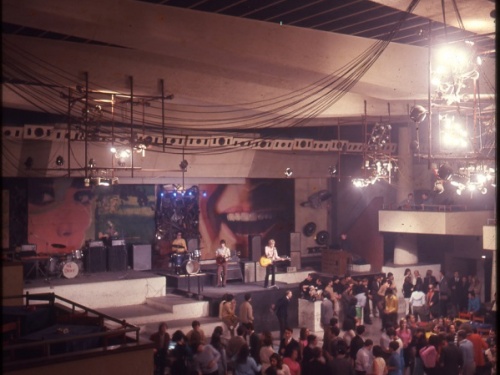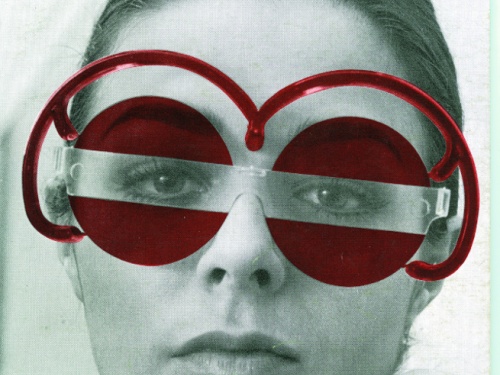Notte Italiana: Escapist Archictecture and Radical Discos
To coincide with our show Radical Disco: Architecture and Nightlife in Italy, 1965-1975, Zero Magazine's Emanuele Zagor Treppiedi has written this piece, exploring key elements of the history of Italian nightlife, in relation to their project Notte Italiana.
Escapist architecture is key to the history of Italian nightlife. It was one of the subjects tackled at the 14th Venice Biennale of Architecture as part of the Monditalia section and an important aspect of Zero’s related project Notte Italiana. The project explored the fascinating history and architecture of significant Italian nightlife destinations through a series of talks by architects, researchers, DJs, performers and curators, a programme of films and, naturally, a party.
The project looked at the radical discos of the 1960s and 1970s, as well as the Adriatic Coast—an entertainment hub from the 60s until the end of the 90s—and the more recent Link Project in Bologna, which can be seen as the first independent Italian centre for arts and clubbing.
A unique combination of avant-garde Italian architectural style and clubs, radical architecture is intrinsically connected to nightlife. The Mach 2 club by Superstudio architects and Space Electronic by Gruppo 9999 were just two of these; others include Piper by studio 3c+t or L’altro Mondo Studios by Piero De Rossi. We decided to concentrate on Mach 2 and Space Electronic as perfect examples of escapist architecture: spaces for music, theatre, installations, concerts, debates and experimentation. These were places where the theories behind radical architecture—based on a reconception of the relationship between mankind, nature and technology—could develop. They were a type of incubator where escape was made possible through the imagining of other potential worlds. The appeal of these locations was also due to their being the only buildings created by these architects that were more theoretical than architectural. Yet, these venues have never been studied and we like to think of them as pieces of architecture that have remained hidden—although not invisible—until now.
The Adriatic Coast runs through Emilia Romagna, a region with a long dancing tradition. During the 1960s and 1970s, this area had the highest concentration of ballrooms in Italy and it remained important throughout the 1980s and mid-1990s with the proliferation of dozens of discos that attracted thousands of young people from all over Italy. This stretch of coast was the heart of nocturnal entertainment for approximately 15 years and, alongside tourism, was a driving force behind the local economy.
Notte Italiana explored this part of Italy from the Baia degli Angeli, a former sports club transformed into a disco in 1975, to Cocoricó, a club established in 1989 and still famous today for its musical line-up and characteristic pyramid shape, inspired by the Louvre in Paris and designed by an engineer from San Marino. Many more venues stand between these two symbolic locations: Slego, Aleph, Byblos—a former villa transformed into a club—and the first ever Italian afterparty Diabolika, which was held in the outbuilding of Riccione’s Grand Hotel; as well as Ethos Mama Club, Echoes, Peter Pan, Cellophane and many more. These venues attracted and capivated hundreds of thousands of young people from all over Italy because they were brand new and hot on technology and architecture. They succeeded because of the fierce loyalty of those who tirelessly attended them, not because of a superstar DJ line-up as is often the case today.
The Link Project in Bologna stands out as a unique case of all-round entertainment. In an occupied pharmaceutical warehouse between 1994 and 2004, students from the nearby arts, music and performance school and other young people with diverse backgrounds and interests would meet up and provide the public with theatre, audio-video performances, installations, concerts and DJ sets that couldn’t be found in any other cultural space in Bologna or even Italy. Organised in such a way that anybody could propose an event, it was also a workshop with one of the first internet points, a bookshop and a tri-monthly magazine. Artists ranging from Compagnia Virgilio Sieni to Mutoid, from Jérôme Bel to Granular Synthesis and from Aphex Twin to Richie Hawtin all passed through the doors. Looking back on the Link programme today with its diverse disciplines (theatre, music, cinema, mixed-media and art) is like looking back over a whole series of biennales. Link was one of the flagships of Italian cultural output and offered young people a lot. It was also where many of today’s entertainment professionals cut their teeth.
These were the starting points for Notte Italiana, a new platform through which Zero magazine explores architecture, music and sociology, as part of a celebration of the history of Italian nightlife. ■
With thanks to Victoria Miller for her assistance with translating this piece.
Radical Disco: Architecture and Nightlife in Italy, 1965-1975 runs 8 December 2015 - 10 January 2016.
This article is posted in: Articles, Blog, Exhibitions, Music
Tagged with: Radical Disco, Exhibitions, Notte Italiana, Architecture, Music, Disco, exhibition, Italy, Italian history










